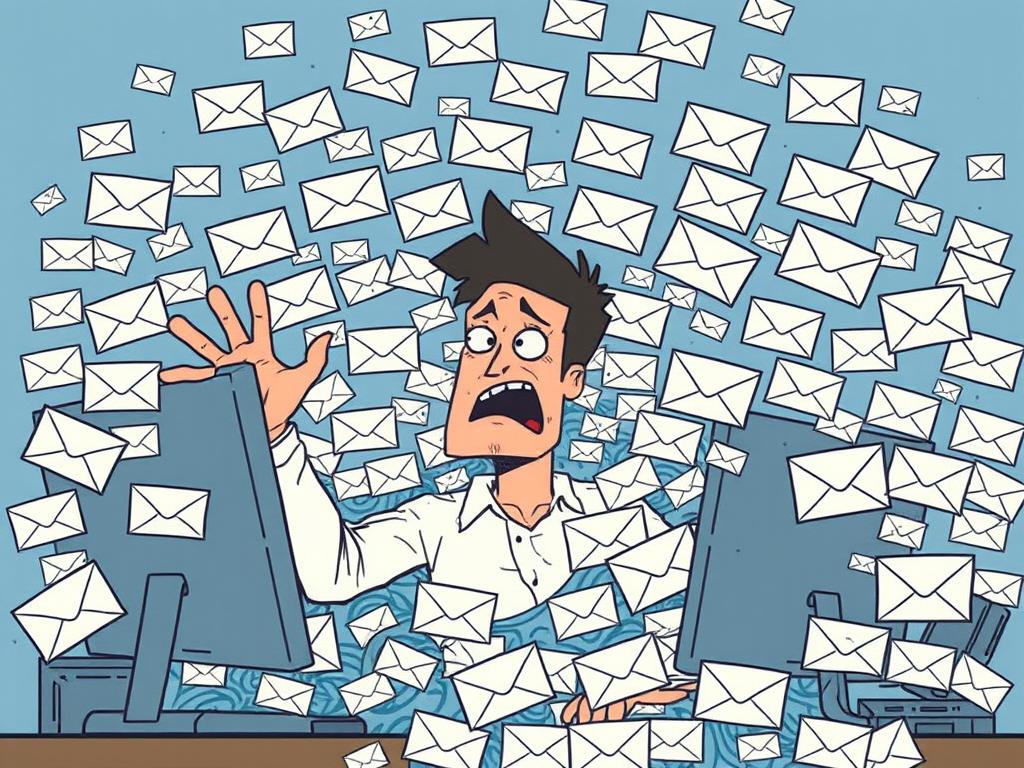The Digital Deluge: Mastering Modern Email and Inbox Organization
The modern professional is drowning in a sea of emails, averaging over 120 messages daily. Statista and other sources confirm this email overload, and the number is only predicted to increase. This constant influx of messages poses a significant challenge to our ability to manage time and focus.
This email management struggle leads to decreased productivity, heightened stress, burnout, and a decline in overall well-being. The American Psychological Association has linked constant connectivity, including email use, to increased stress. It’s a self-perpetuating cycle of feeling overwhelmed and ineffectively managing email.
Common mistakes contributing to email chaos include constantly checking email, treating the inbox as a to-do list, neglecting to unsubscribe from unwanted subscriptions, and hoarding emails “just in case.” These habits transform inboxes into digital landfills, making it hard to find important information.
Core Principles for Email Management
Timeboxing: Allocate specific time slots each day exclusively for email processing. This prevents email from interrupting other tasks and enhances concentration. Experts suggest 2-3 dedicated periods instead of constant checking.
Inbox Zero: Popularized by Merlin Mann, Inbox Zero is a philosophy focused on regularly processing and clearing your inbox, so it contains only items needing immediate action. While achieving true “Inbox Zero” may be difficult, the underlying principle of proactive inbox management is essential. Adapt the philosophy to create “Inbox Sane” for your needs.
Proactive Email Handling: Take control of your email engagement. Rather than reacting to every message, be deliberate. Filter distractions, prioritize critical communications, and schedule time for thoughtful responses. Manage your workflow instead of being controlled by your inbox.
Actionable Strategies for Inbox Organization
The 4 D’s of Email Triage: Use this framework when processing an email. Decide to Delete irrelevant emails, Delegate tasks to suitable individuals, Defer actions by scheduling them, or Do tasks immediately if they take only a few minutes. This prevents emails from lingering in your inbox.
Folder System: Implement a well-organized folder system as a filing cabinet for your digital life. Create folders for projects, clients, or relevant topics using a consistent naming convention for easy navigation. Create folders for each client and subfolders like “Ongoing Projects,” “Completed Projects,” and “Invoices.”
Filters and Rules: Automate your email management. Most email clients allow the creation of rules to sort incoming messages by sender, subject, or keywords. Direct newsletters, notifications, and less urgent emails to designated folders, keeping the inbox focused.
Master the Search Function: Efficiently search within your email client to save time. Use advanced search operators (like “from:john subject:project proposal”) to quickly locate specific emails even if you don’t remember all the details.
Taming Email Notifications
Email notifications disrupt focus and productivity. Turn off non-essential notifications to improve concentration and reduce stress.
Batch Process Notifications: Schedule specific times to check and respond to notifications. This minimizes distractions and allows a clear approach.
Focus Modes and Apps: Minimize distractions with tools that block distracting websites and notifications, creating a dedicated workspace. Consider Forest, Freedom, or built-in focus modes on your devices.
Composing and Sending Effective Emails
Subject Line: A clear and concise subject line is crucial for getting your email noticed, accurately reflecting the message’s content, and enticing the recipient. Avoid vague subjects like “Hi” or “Update.”
Templates: Save time and maintain consistency by creating templates for frequently sent emails like meeting requests, follow-up messages, or project updates. Customize the templates as needed.
Reply All Judiciously: Only include recipients who need to be part of the conversation. Unnecessary “reply all” responses clutter inboxes.
Email Signature: Optimize your email signature as a digital business card by including your name, title, company, and contact information. Add links to your website or social media profiles.
Choosing Email Management Tools
Gmail and Outlook: These are dominant email clients with various features. Gmail excels in search and Google Workspace integration, while Outlook offers robust calendar and task management. Explore both.
Third-Party Apps and Extensions: Enhance email organization with tools like Boomerang to schedule emails, track responses, and set reminders. Sortd transforms your inbox into a visual task management system.
AI-Powered Email Assistants: Emerging tools prioritize emails, suggest responses, and summarize threads. While still developing, they offer potential for streamlining workflows.
Maintaining Long-Term Email Hygiene
Unsubscribe: Regularly unsubscribe from unwanted lists to keep your inbox clean. Services like Unroll.me can manage multiple subscriptions.
Archive and Delete: Periodically archive or delete old emails to prevent inbox clutter. Archive emails for future reference and delete unnecessary emails.
Evolving Strategies: Continuously review your folder system, filters, and rules to ensure effectiveness. Experiment with new tools and techniques.
Email and Mental Health
Set Boundaries: Establish boundaries around email response times to protect mental health. Don’t feel obligated to respond immediately, especially outside work hours. Communicate your availability.
Digital Detox: Schedule regular breaks from technology, including email, to recharge. Engage in enjoyable and relaxing activities.
Recognize Stress Signs: Identify signs of email-related stress and burnout, such as feeling overwhelmed or irritable when checking email. Reduce your email load and prioritize well-being.
The Future of Email Management
AI Revolution: Emerging AI technologies will enhance email organization with sophisticated prioritization, response suggestions, and task automation.
Collaborative Platforms: Platforms like Slack and Microsoft Teams are changing workplace communication with real-time messaging and file sharing, reducing reliance on email.
Evolving Work Environments: Adapt email strategies for remote work by using different channels and setting clearer boundaries around email communication.
